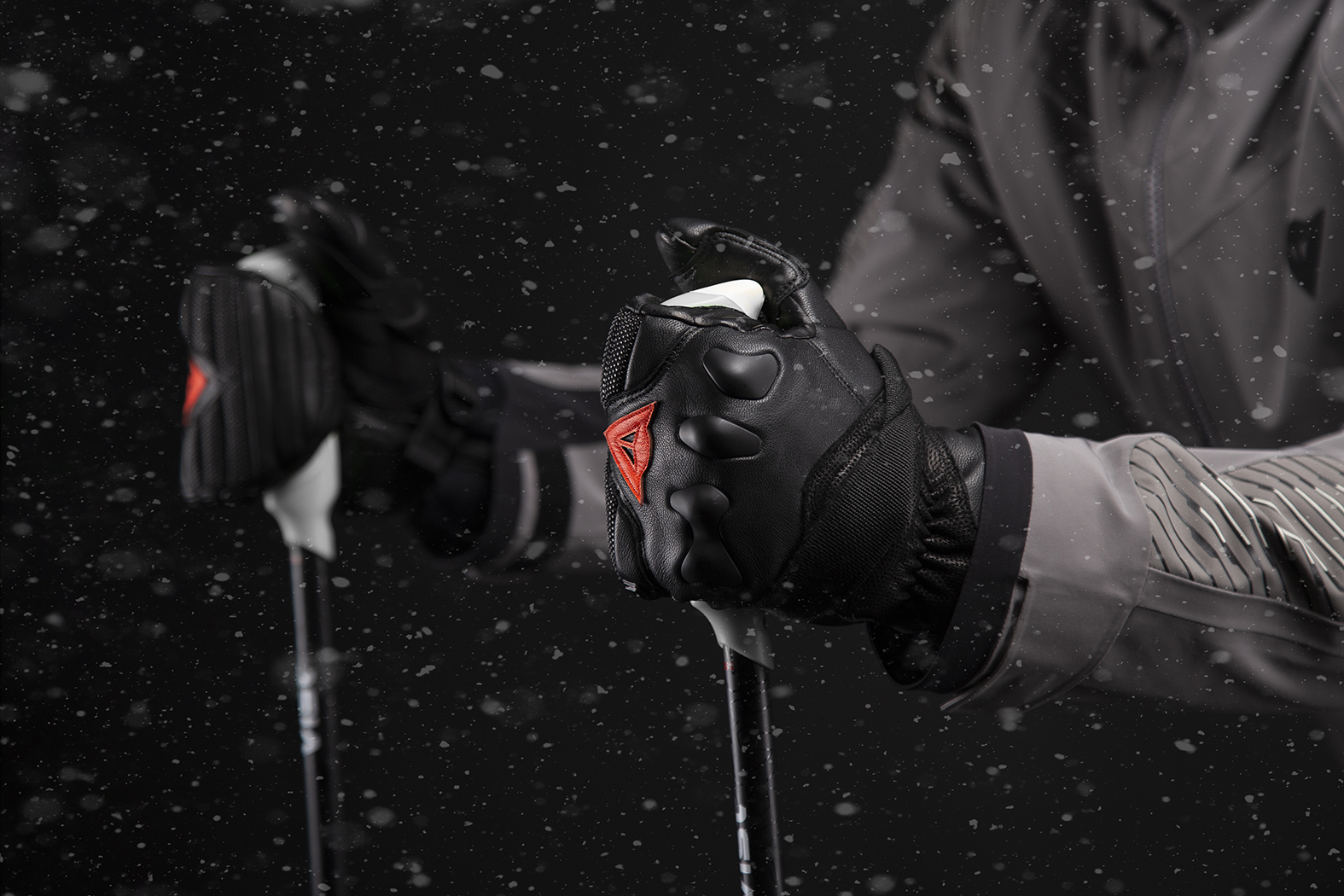Summer skiing on glaciers is for real enthusiasts, those who really can’t give do without snow even in the hottest months of the year. But there’s a first time for everyone, and the question of how to equip yourself is a perfectly legitimate one. On the other hand, we all know that the weather can change suddenly high up in the mountains. A clear sky can become dark and threatening at any moment. Will it be hot? Will it be cold? A 100% reliable forecast is always hard to come by, so you need to be ready for everything.
The classic advice to dress in layers, or onion-style, is more valid than ever. If you may have to tackle sun, ice, wind and water, you need to be able to modulate layers according the whims of the weather. Layered clothing allows you to quickly remove one or more layers to cope with the heat, as well as having something to add in the backpack in case the temperature drops more than expected.
The outermost layer is known as the shell. It’s a waterproof and windproof garment, the layer that gives us the most protection against the elements, like water, snow and wind. The quality of the materials used and of the construction here is fundamental, allowing us stay perfectly comfortable all day long and focus on having fun rather than anything else.
The best clothing on the market has a laminated membrane, i.e. bonded directly with the fabric. It’s a solution that guarantees the best performance in terms of both waterproofing and breathability, and breathability, which often takes a back seat to waterproofing, is actually just as important. A membrane that allows moisture to pass from the inside to the outside is of fundamental importance in order to avoid getting wet, but because of sweat. As far as water resistance is concerned, a brief explanation of the water column that you always hear about is helpful.
The water column indication comes from a lab test in which a 2.5 cm diameter tube is placed on a piece of the membrane in question. Water is poured into the tube and the measurement taken is the amount that can be added before the pressure on the material means that the water penetrates it. A value of 20,000 mm, for example, means that the water column will notionally need to be 20 meters high in order for the pressure to make water penetrate the membrane. The result, in this case, is clothing with excellent waterproofing performance, able to prevent water from passing even in prolonged and heavy rain.
Another essential element is taped seams. Cheap clothing can be found made using membranes that have pretty good water-repellent properties but still let water in through the seams. Obviously, the performance of the membrane goes completely to waste if the seams aren’t waterproofed through taping. So pay attention to this detail. Even the hood of the shell can sometimes prove decisive. In heavy rain, wearing a hood over a helmet can save us from an unwanted shower, as it prevents water from leaking from the edge of the helmet and getting into the neck of the jacket.
The padding we choose to use under the shell is probably the first layer we’ll remove when it gets warmer and the first we’ll add when it gets colder. As fine and very warm as natural down may be, it does have some… downsides. It takes a long time to dry, if it stays damp it may produce bad smells, it isn’t easy to wash and it requires many precautions.
The most modern synthetic padding does away with these disadvantages, offering the same level of insulation against the outside, but with greater comfort and practicality. A material with high-tech content such as Primaloft Cross Core structurally incorporates Aerogel, the lightest material there is in relation to density, since more than 90% of it is air. This kind of yarn offers exceptional insulation and extremely low weight.
Underwear is just as important as the other layers we wear. It had to be worn as the first layer, in contact with the skin, so that its characteristics can be exploited. It must be made of technical material, able to absorb sweat and moisture and keep it as far away from our body as possible, to avoid an annoying wet T-shirt sensation. Let’s give new technologies their due and use them: a full set of high-quality underwear will always offer much more performance than an ‘old school’ cotton shirt, for superior comfort in every situation.

The torso, however, isn’t the only part of the body to consider. Hands, for example, can cool quickly if not properly covered, especially if the temperature was high until very recently and the padding of the gloves is drenched in sweat. For this reason it’s useful to carry two pairs in your backpack if you have one: a lighter one for warm weather and a heavier one for when you encounter worse weather.
In the same way, wearing a pair of pants that can adapt to temperature changes is a great help. The high-end models have large air vents that can keep us cool on warmer days. Then you need only close the zippers to get perfect insulation from your clothing again. Other, more sophisticated models have a modular construction that lets you remove the inner lining.
When you can’t rein the passion in, it only takes a few measures for you to be able to give it your all, even in the most difficult conditions. When you take care over your technical equipment and get physically fit, skiing can be fun all year round, even in a potentially inhospitable environment such as high up in the mountains.